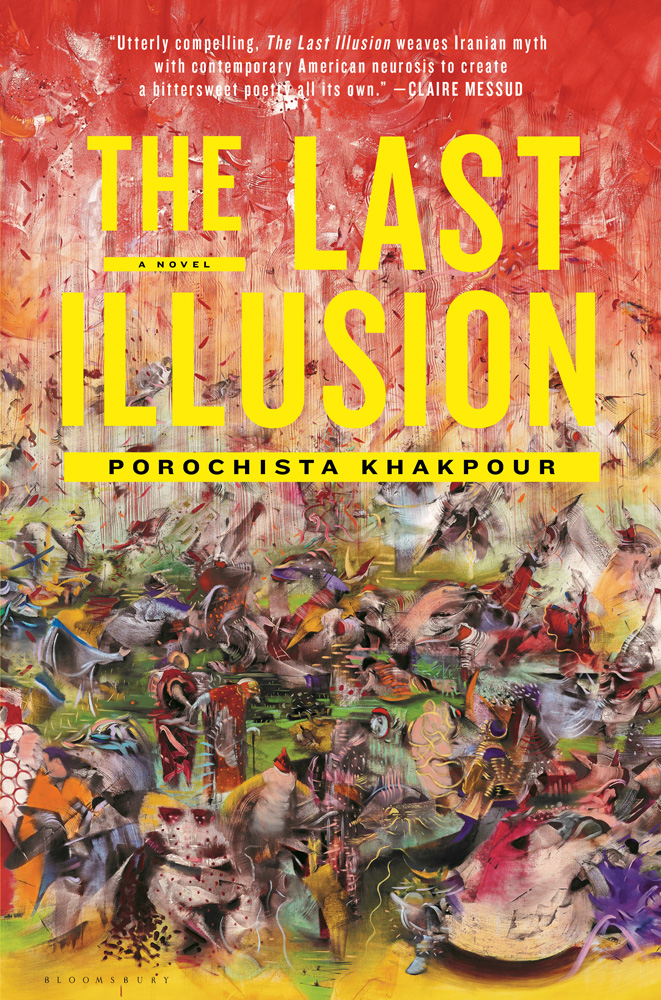
The Last Illusion
A Novel
کتاب های مرتبط
- اطلاعات
- نقد و بررسی
- دیدگاه کاربران
نقد و بررسی

March 24, 2014
The Last Illusion is Khakpour’s second novel, but it has the larky-yet-self-serious aura of a first effort. We follow Zal, born eerily pale in rural Iran, and is caged and raised as a bird by his horrified mother. Adopted and gradually socialized by a benevolent scientist named Hendricks, the half-feral Zal comes to New York in summer 2001 as an (understandably) awkward teenager still fighting a taste for carrion and a desire to fly. He falls in with two equally desperate characters: the seedy magician Bran Silber who preys on Zal’s dreams of flight and is planning a spectacular illusion called “Fall of the Towers,” and, more significantly for Zal, the quirky Asiya McDonald, whose love for him is tested by the needs of her 500-plus-pound sister, Willa, and by premonitions of an approaching terrible event. That the inevitable convergence of these plots (allegorized by Zal’s ascents and combustions) is drawn out for some time could be considered a cheap shot at pre-9/11 nostalgia, and it becomes clear that the magical-realist elements aren’t convincing. Strip them away and you have a familiar, indie-cinema sort of love story, set in a stylized New York with a few swaths of memorable writing.

Starred review from May 1, 2014
An audaciously ambitious novel that teeters along a tightrope but never falls off.Following her well-received debut (Sons and Other Flammable Objects, 2007), this Iranian-American novelist returns with what on the surface is a coming-of-age story about a boy who was raised as a bird, based on a myth from the Persian Book of Kings (which finds its way into the story within this story) about an Icarus who becomes a great warrior and hero. The protagonist of this novel is neither. His name is Zal (it rhymes with "fall," which is what happens to those who cannot fly), and he was born in Iran, very pale and blond in a country of darker skins, to a mother who considered him a mistake and a "White Demon." His birth sparked his "mother's disintegration into a crazy bird lady," and she raised him in a menagerie, as a bird. The tone then shifts, or slides, from once-upon-a-time fable into something closer to American realism, as the setting shifts to New York City around the turn of the millennium. Zal has been adopted by a behavioral analyst who wants to help him develop the human side of his adolescent personality and guide him into adulthood. Zal learns to "keep the bird in him, any bird in him, so deep within himself that it resurfaced only rarely"-though he does retain an appetite for insects and develops a crush on a particularly comely canary ("tiny but still voluptuous, round in all the right places"). In a coincidence that strains credulity, he happens to meet an artist who works with dead birds, who becomes his first love and is something of a strange bird herself. She suffers from anorexia, panic attacks and premonitions, the last of which proves crucial and tragic. And he encounters an illusionist who sparks the novel's title, planning to make New York disappear: "Not New York, exactly, but the New Yorkness of New York."Plot summary fails to convey the spirit of this creative flight of fancy; farce meets disaster in a novel that illuminates what it means to be human, normal and in love.
COPYRIGHT(2014) Kirkus Reviews, ALL RIGHTS RESERVED.

May 1, 2014
"Exactly once upon a time in a small village in northern Iran, a child of the wrong color was born." So begins this latest novel from Khakpour (Sons and Other Flammable Objects), which centers on Zal, whose mother cages him with her menagerie of birds until he is ten years old. Years after being rescued, Zal lives with his adopted father in New York City and tries to shape something of a normal life. But Zal is still obsessed with one thing--flight. He becomes fixated on illusionist Bran Silber, who claims he will fly at his forthcoming show. Enter Asiya McDonald, an artist from a grotesque Upper East Side family with her own tragic secrets and ominous premonitions, whom Zal comes to love in his own way, "normal" or not. Just as life is becoming clear to Zal, his world is threatened, and the city is blindsided by 9/11. VERDICT Khakpour's prose is fluid and visceral, while the narrative plays smoke and mirrors with reality and perspective. If some bloviating on unimportant details is overlooked, this novel is a literary gem full of sadness, guts, and wonder. For any adult who enjoys good fiction.--Shannon Greene, Greenville Technical Coll. Lib., SC
Copyright 2014 Library Journal, LLC Used with permission.

April 15, 2014
Lauded Iranian American critic and novelist Khakpour writes another gripping tale that mixes myth and history. Based on Persian folklore, The Last Illusion is the story of a feral albino boy raised in Iran until age 10 by a deranged mother who keeps him in a cage and treats him like a bird. The boy, Zal, is discovered by his grown sister and passed off to a famous American child analyst, who adopts him, takes him to New York City, and sets out to help him integrate into society. Zal takes on the streets of New York, with its myriad characters, the same way a bird might cock its head at the strangeness of human behavior, but as he grows, he longs to be normal and must fight against his instincts to be bird. Khakpour's writing walks a line between mythical and realistic, somehow melding the two seamlessly and keeping reality in sharp focus; the reader aches for Zal, who fumbles through life as neither completely bird nor completely human.(Reprinted with permission of Booklist, copyright 2014, American Library Association.)

























دیدگاه کاربران